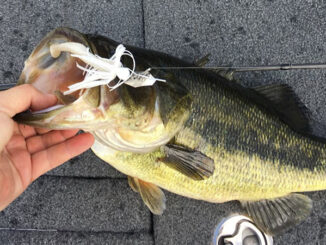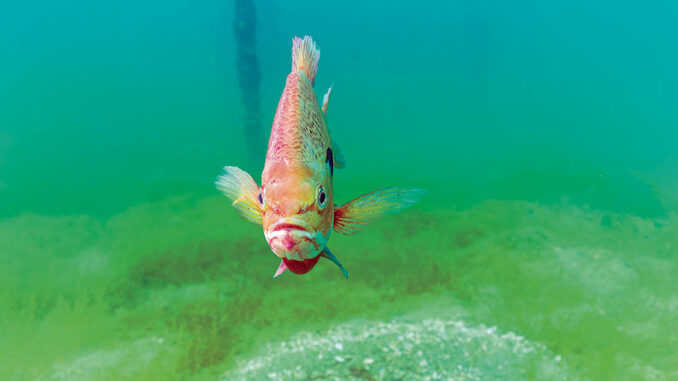
Modern sonar lands anglers in the middle of bedding bluegills
We squinted to see the first indefinite, wiggly images come up on the small screen, looking like some 1980’s photos of the moon’s surface.
Finally the screen became clear and we gazed at the image shown from the lake’s bottom just 15 feet in front of the boat.
Small crater after crater, most of them identical in size and in no particular pattern, they dotted the small flat in about 3 feet of water.
“Bream beds,” said bass pro Jake Ormond of Sterlington. “Welcome to spring.”
Today’s fancy forward facing sonar is pretty good and while you could make out some dark spots on some of the beds, you couldn’t see the individual fish, if they were there.
“Oh, they are there. They are everywhere around there,” Ormond said, setting down his bass rod and picking up a KastKing ultralight spinning rod combo with a small Johnson Beetlespin lure attached. He made a cast, counted to three and began reeling. Almost instantly, the rod bowed and a few seconds later a hefty bluegill came splashing to the surface.
And then again. And again. And again.
While Ormond usually focuses on bass or crappie, he also takes time to guide for bream, especially this time of year. People who want in on a lot of action can find it with bedding bream. You can usually catch a few bream all around most any lake, but finding the beds is like hitting the jackpot.
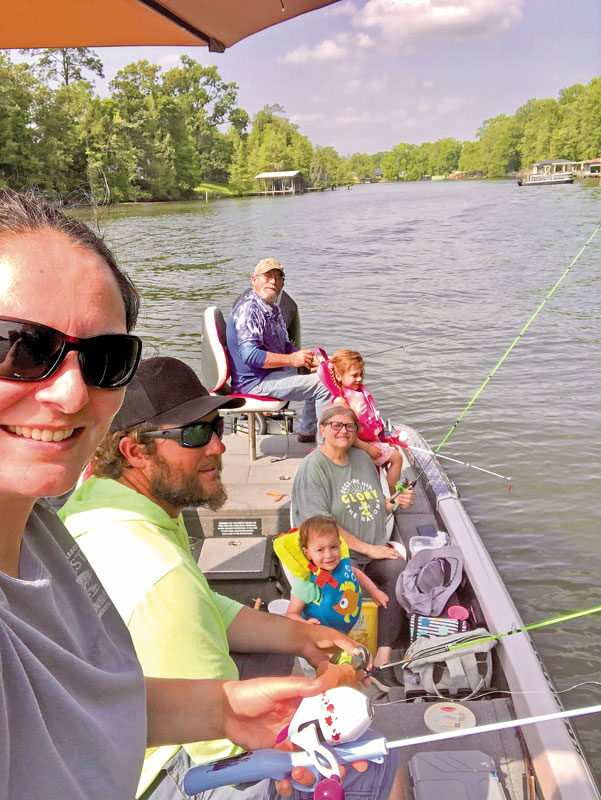
All across the state
The same scene can be repeated from one end of the state to the other, on and off as the bream spawn, this season. Sometimes you can see the bream beds in clearer water without electronics. Some “old pros” even say when the fish are thick they can smell fish when they are over or near bream beds.
But you can definitely see them on the radar. If you don’t have that fancy gear and you have a friend who does, maybe you can get him to take you out and help you mark a few areas with concentrated bream beds. Either way, it’s time to go get them.
Now, here’s the deal. Most anglers who are strictly bream fishermen aren’t going to lay down $3,000 or more for forward facing sonar like Garmin LiveScope or Lowrance Active Target.
But if you already have such a unit and you want some extra fun, especially with kids or friends who may not get to fish very often, don’t pass up this opportunity.
And if you are a bream angler who has a good buddy who has this fancy equipment, it would be worth your while to buy him a chicken dinner or a few of his favorite baits in exchange for a couple of hours scouring your favorite lake looking for bream beds. Once you find them, it’s easy to remember the area where they are located and you don’t have to be able to see them, just get in the general location. You might be surprised where you find big bunches of bream beds as well. Sometimes anglers stumble across them on the sonar where they least expect to see them.
Spawning bream are amazingly easy to catch. The key is finding them. Here are some tips on just how to do that and make the most of it when you do.
1. Flats, shallow banks and humps
Bream spawning studies have shown the small panfish to make beds in as deep as 20 feet, but that is usually on exceptionally clear lakes, which we don’t have a lot of in Louisiana. Typical beds are in 2-3 feet of water up to six feet. In some Louisiana bayous and dingy lakes with lots of cypress trees and cover, bream will bed as shallow as a foot to 20 inches. Unfortunately, you can’t find those with electronics, but you can usually spot them by one of the other methods we mentioned.
Keep your eyes open. Often you can see the beds without a depth finder, especially in clear water with a sandy bottom.
If there are big stands of shallow water cypress or tupelo trees, find good sized openings among the trees and target those spots. Bream bed in the open but still like to be near cover.
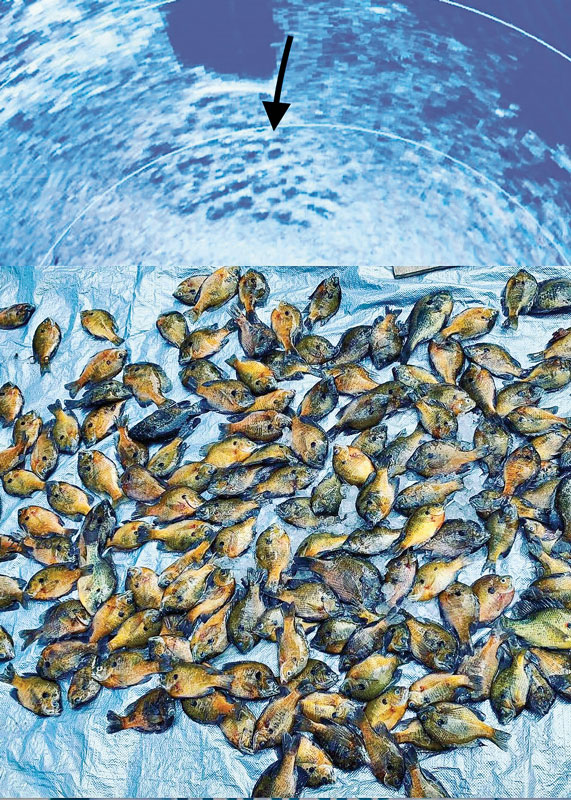
2. Tiny bubbles and… smell?
When the water is calm and still, even while you fish, keep your eyes out for groups of tiny bubbles. Those can be caused by several things, but when a big bunch of bream are scurrying around the bottom in a bedding area, they stir up leaves and other organic material and often make bubbles. If the bubbles are consistent, it may be bream.
Some bedding areas have a peculiar odor which veteran bream fishermen can smell. If there are hundreds of bream there just under the water, it makes sense there could be a fishy smell above the surface. Trust your nose. Many old timers can cruise around and follow their nose right to big bedding areas chocked full of bream.
3. Just be quiet
Be quiet when you are within fishing distance of bream beds. Bang a cricket box on the boat bottom (especially in an aluminum boat), slam a livewell or icechest lid or even talk loudly and you’ll scare the fish off the beds, or make them less likely to bite.
Occasionally a catfish or a couple of bass will blow through a bream bed looking for a snack. Usually you’ll see them attack some bream and see swirls on top of the water. Don’t expect any action for 10-15 minutes after that. You can try another bed or just sit tight and keep your line out of the water. Grab you a can of viennas and some crackers and just enjoy being on the lake.
4. Spawning six-shooters
When you are on a bunch of bream beds it usually doesn’t matter what bait you use. Live bait like crickets, red worms, small crawfish and wax worms work great, but you have to stop and rebait your hook every time you get a bite. Bream may sometimes be finicky with plastics, but unless something is wrong, they’ll usually lay the smack down on any live bait. Veteran live-bait fishermen almost all agree that it is almost a necessity to cover the point of your hook with part of the bait so it will look more natural. Hey, the bream are hungry, but they aren’t stupid.
Small plastic lures come with or without spinners. Some of the best include Berkley Alive Waxies, small Uncle Buck’s Panfish Spinners and 1/32nd ounce Johnson’s Beetle Spins. Colors range from white to black, but when the fish are hungry they don’t seem to matter.
Remember, too, that bream seem to be more active on sunny, calmer days. Keep that in mind.

5. Location, location, location
Sometimes bream sit in the nest, especially once eggs are deposited there. But they often hang right off the edge. Females usually only come to the nest to lay eggs, but then lay nearby on the edge of a grassbed or suspend shallow along a stump line. The big bull bluegills will stay right with the nests until the spawn is complete.
6. Now what?
You can catch from 20 to 100 big old bream before you know it. Most people catch bream to eat, so keep your bream alive or get them immediately on ice to best preserve the flavor. Whether you scale them and clean them for whole frying, or like to fillet them, remember the more you keep, the more work you have when you get home.
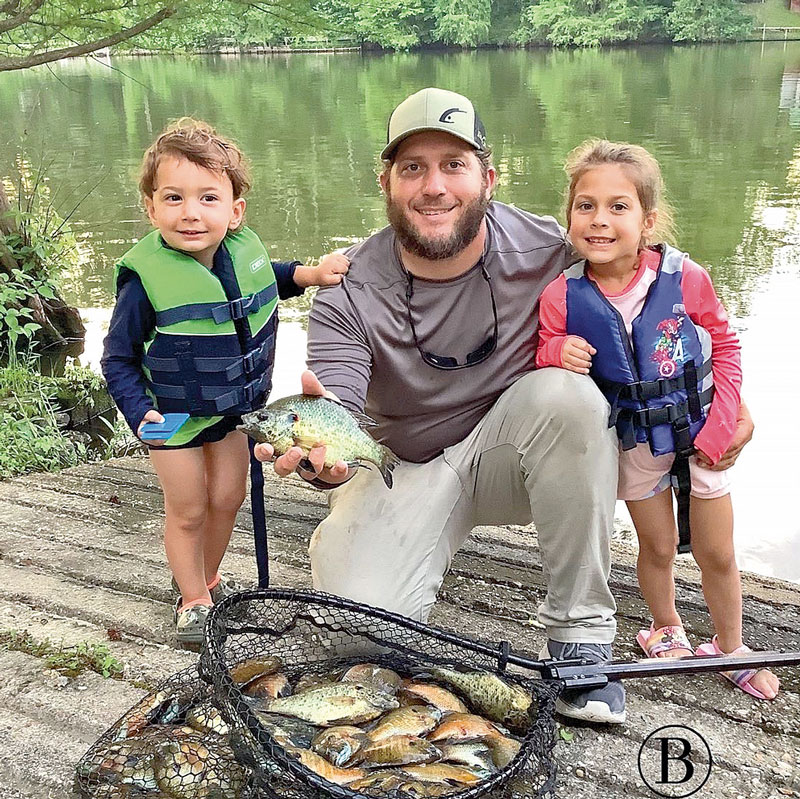
Last cast
Bream populations aren’t in any danger of being decimated, but don’t keep more than you want to clean.
There are several species of bream found in Louisiana and they all spawn in round nests in shallow water. The nests are kept clean by the male fish, who then guard them when they have eggs in the nest. Types of bream include bluegill, chinquapins, goggle-eyes (warmouth) and green and redbreast sunfish. They usually run together, but often goggle-eyes and chinquapins (redears) can often make their nests in smaller groups. By far the most abundant are the bluegill. Bluegill males usually begin constructing and defending beds in April, but May is considered the prime month for the beginning of bedding season. It all depends on weather, water temperatures and sometimes, other water conditions like clarity.
Catching bream is fun for fishermen of all ages. Finding bedding bream is especially exciting for younger anglers, who often lack patience for other species. Many a fisherman has been hooked by early bream fishing trips where they load the boat with bream and always want to go back for more.

